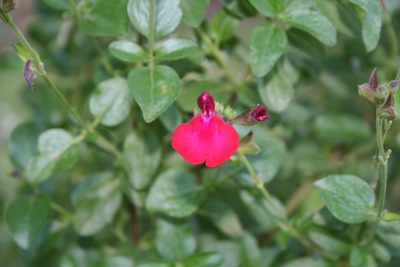What’s the difference between soil, compost, and mulch?
Soil is the substrate that your plants grow in. Soil is made up of varying amounts of sand, silt and clay. And if you’ve got a good balance of these three mineral elements your soil is called loam. Too much clay leads to sticky, heavy soil that inhibits plant growth. And too much sand leads to leeching and a lack of water holding capacity. Silt is somewhere in between clay and sand as far as size, texture and effect on overall soil structure.
If you’re lucky, your soil also has a good amount of organic matter and a healthy microbial population. But you might be surprised to learn that a soil with only 5% organic matter is pretty fabulous, and it’s hard to get even that much into your soil.
Compost is pretty much all organic matter. Commercial compost includes many natural ingredients. At home, we make compost by combining leaves, grass clippings, and kitchen scraps. Ideally, we’ll add a little garden soil, too. Your soil contains the necessary microbes to break down the organic matter in your compost pile to a size and texture that’s beneficial in your soil.
Compost helps to increase the water holding capacity of your soil without overdoing it. It helps to break up heavy clay soils and helps sandy soils hold a bit more water. It builds the structure of your soil giving it just the right balance of air and water.
Compost also feeds the microbial population, helping to keep them around and contributing to your overall soil health.
Mulch is ground up plant parts that are not composted and are generally larger pieces than compost. Pruned tree limbs that have been processed with a chipper shredder, bark pieces, and even processing byproducts such as pecan shells can be used as mulch. Mulch is generally all carbon as opposed to compost which contains both carbon and nitrogen. Mulching your soil around plants retains soil moisture, tempers soil temperature and helps repel weeds.
There are also inorganic mulches, like gravel or even stones.
Compost may also be used as a mulch, since the primary purpose of mulch is to protect the soil from the environment by covering it. Both compost and mulch eventually break down due to the weather and the action of microbes, which is why it should be replenished at least yearly.

 Molly O’Halloran
Molly O’Halloran Diana Kirby
Diana Kirby Daphne Richards
Daphne Richards
 John Dromgoole
John Dromgoole